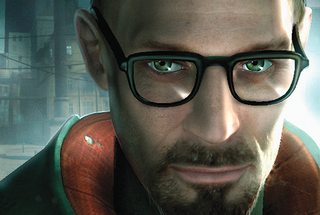
This article first appeared in PC Gamer magazine issue 387 in August 2023. Every month we run exclusive features exploring the world of PC gaming—from behind-the-scenes previews, to incredible community stories, to fascinating interviews, and more.
Half-Life 2 was a phenomenon, a game so good one of the few complaints levelled against it was that it didn't go on forever. "I want to bemoan the fact that it had to end at all," Rossignol wrote. As time regrettably stopped for Gordon atop City 17's Citadel, the question on everyone's lips was, "What's next?" Surely Valve wouldn't leave Alyx stranded beside an exploding portal. Surely Gordon wouldn't remain trapped in the G-Man's limbo. Valve had followed-up the most celebrated shooter of its day with something even better. Surely it would do it again.
Valve's answer was unexpected, and has only grown stranger as the years turned to decades. Two expansions, a VR prequel, a host of aborted spinoffs, and a rumour-mill so productive that it became a running joke. But never the one thing Valve fans have craved more than anything else, that trio of magical words, Half-Life 3.
Valve's evasion of its most famous series baffled players for years. But it isn't 2010 anymore, where the only clues to Half-Life 3's whereabouts were a few cryptic allusions from Gabe Newell and a few cruelly staged internet hoaxes. There are answers to be had. Dig through the interviews, the news stories, the rumours and the leaks that have stemmed from and revolved around Valve for the last 20 years, and it's possible to build a surprisingly complete picture of Half-Life's history during its long absence. We can confidently answer the two most important questions—what happened to Half-Life 3? And why didn't Valve make it?
Half-Life 2
Point insertion
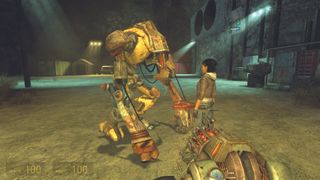
Newell sees Half-Life 2 as an engine, a platform, or at best a whole industry unto itself.
Geoff Keighley
Perhaps the greatest irony of the whole Half-Life 3 saga is that Valve may never have intended to make a third Half-Life game at all. At least, not in the conventional sense. This notion was being suggested by Valve before Half-Life 2 had released. Hidden in the corner of PCZone's review of Half-Life 2 is a boxout titled 'What's next for Valve?', in which the mag presses Valve's former PR man Doug Lombardi about the idea of making Half-Life a trilogy. "I don't know where that rumour came from," Lombardi responds. "That's just one of those rumours, like you had with Star Wars. We honestly don't know how many of these things we're going to make."
Lombardi's statement was true, albeit misleading. In The Final Hours of Half-Life 2, Geoff Keighley explains Gabe Newell's vision for Half-Life 2 prior to its release, which stretches far beyond a mere trilogy. "Half Life 2 isn't just a game," Keighley wrote. "Newell sees Half-Life 2 as an engine, a platform, or at best a whole industry unto itself. Going forward there will be engine licenses, hundreds of thousands of user modifications (mods), episodic content, sequels, add-ons and expansions." Certain elements of Newell's vision would come true (Half-Life 2 isn't short of mods, for example). But the idea of an omnipresent Half-Life universe stands in stark contrast to the modern reality.
As for direct-follow ups, Keighley's passing mention of sequels implies that Half-Life 3 was in the aether. But later in the article, it becomes clear that Valve has no immediate plans to build a straight sequel. Making Half-Life 2 was a bruising experience for Valve. It took six years at a time when most games were turned around in two or three (by comparison, the original Call of Duty was made in 18 months). Around two years of this was spent in crunch, where designers work long additional hours to get the game made. The project restarted halfway through, and the delay of the game from its scheduled release date of September 2003 put Newell under intense scrutiny from fans and the press. Worst of all, Valve had to contend with an unfinished version of the game being leaked online by a German hacker named Axel Gembe.
By the time Half-Life 2 released, Valve's developers were exhausted, with Newell admitting at the time, "We absolutely have chewed people up on this project." Hence, the prospect of committing to another long development cycle was unimaginable: "We need to do smaller and shorter projects at first to avoid burnout."
The biggest gaming news, reviews and hardware deals
Keep up to date with the most important stories and the best deals, as picked by the PC Gamer team.
Episodes 1 & 2
Direct intervention
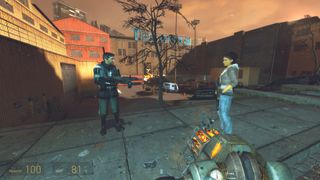
By this point, Newell was also considering how to leverage Valve's new digital distribution platform Steam, which could bypass the whole process of buying physical games from shops, and get them into the players' hands more directly. One idea was to use it to deliver games in shorter chunks, referred to as "episodes". It was an attempt to make games in a new way, quicker, with less of a human cost. Valve didn't want to make another Half-Life 2, a game that required it to reinvent everything again.
Moreover, the six years spent making Half-Life 2 were not just spent building the game. They also involved making the engine, Source. "We'd just got comfortable with all our tools and what we could do," said Valve designer Robin Walker in an interview with PC Gamer about Half-Life 2's first expansion, then titled Aftermath. "That's normally the point in which we'd go off and make new tools—we didn't want to do that." This was partly because Valve figured doing so would take even longer than it had with Half-Life 2, a point Newell explained in an interview with Eurogamer shortly after the launch of Episode 1. "The original Half-Life took us two years to develop. With a considerably larger team Half-Life 2 took us six years to develop. So we thought if we were going to continue our trend with Half-Life 3 we would basically ship after we had all retired."
In the same interview, Newell confirms Valve viewed the Half-Life 2 episodes as the equivalent of a third game. "Probably a better name for it would have been Half-Life 3: Episode 1," because "these three [episodes] are what we're doing as our way of taking the next step forward." Newell doesn't explain why they kept the Half-Life 2 tagline, but he does elaborate on why they wanted to get more of the story out quickly, stating fans "didn't want to have to wait as long as they had previously to find out what happened".
In that sense, Episode 1 was a success, launching 20 months after Half-Life 2 in June 2006. This was later than Valve initially planned, as the development of Half-Life 2: Lost Coast and the Day of Defeat: Source "took some cycles", but it was still a significant improvement over the six-year turnaround of Half-Life 2. The gap between Episode 1 and Episode 2 was even shorter, with the latter releasing just 16 months later in October 2007.
Valve's plan seemed to be working. Not only had it released two well-received Half-Life episodes in half the time it took to make Half-Life 2, but it had also found time to make Team Fortress 2, one of the best multiplayer shooters, and Portal, a revolution in first-person gaming that was quietly The Orange Box's MVP. Episode 3 was supposed to follow hot on the heels of The Orange Box, scheduled for Christmas 2007.
Episode 3 might happen
Entanglement
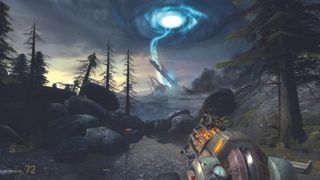
It isn't clear when Valve formally cancelled Episode 3, but it was pretty much dead in the water by the time of Portal 2's launch.
Christmas 2007 came and went. Then another Christmas came and went. Then another. And then another. Valve wasn't completely silent on Episode 3 during this time. Concept art for Episode 3 was revealed in 2007, with more leaking online the following year. In 2009, a report surfaced stating that Valve was learning sign language to make a deaf character for Episode 3. The news became vaguer as time went on, with Newell speaking about "broadening the emotional palette" of Half-Life in 2010.
It isn't clear when Valve formally cancelled Episode 3, but it was pretty much dead in the water by the time of Portal 2's launch. The reasons behind its cancellation are clearer, albeit complex. By this point, Valve had started to encounter problems with the episodic model. It was supposed to take advantage of digital distribution, getting games into player's hands faster and more directly.
Indeed, Episode 1 was meant to be an entirely digital product. "If we were doing this without Steam we'd have to put [Episode 1] in a box, we'd have to start figuring out shelf space over a year beforehand," Walker said to PC Gamer in 2005.
Yet Episode 1 ended up releasing in a box anyway, because retail was still too big to ignore at the time. And retailers found the concept of episodic games confusing. "Our experience with Episode 1 taught us that retailers had real difficulty selling a low priced box containing a new, high quality game," Walker told me in 2017 for an article about the tenth anniversary of the Orange Box, published on Rock, Paper, Shotgun.
For Episode 2, Valve tried to solve this problem by bundling it with Team Fortress 2 and Portal, essentially creating a premium game out of three smaller ones. But according to Walker, this confused retailers too, as multipacks were reserved for "bundles of old titles or bundles of low-quality ones". Making the Orange Box was also an organisational nightmare compared to Episode 1. "The process itself had the pretty immediate effect of us saying, 'Yeesh, let's not try and do that again!'"
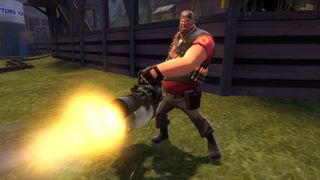
Meanwhile, Valve's experience making Team Fortress 2 had opened the company's eyes to the advantages of a live-service model. Speaking at Develop in 2011, Newell said, "With episodes, I think we accelerated the model and shortened development cycles with it. If you look at Team Fortress 2, that's what we now think is the best model for what we've been doing. Our updates and release model keeps on getting shorter and shorter."
Other factors played into Episode 3 cancellation. With the spectre of Half-Life 2's development fading, Valve had begun to build new tools in the form of Source 2. Moreover, as Walker explained to Kotaku in 2021, "Half-Life has always been an IP where I think we were interested in solving some interesting collision of technology and art that had revealed itself." Episode 1 innovated simply through its episodic nature, while Episode 2 formed part of the unique experiment that was the Orange Box. With Episode 3, Walker claimed Valve couldn't find the "wonderment, or opening" to make the episode an event like the previous two had been.
Episode 3 might not happen
Under the radar
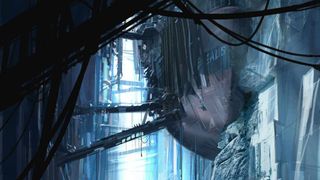
Although Episode 3 never released, we can assemble a rough picture of what it looked like. We know, for example, that it would have centred around the Borealis, the mysterious icebreaker first glimpsed in a video call with Judith Mossman during Episode 1.
The spectre of the Borealis has haunted Half-Life since development started on the second game. Originally named the Hyperborea in Marc Laidlaw's first draft of the Half-Life 2 script, the player arrived into City 17 on the icebreaker, not via train as seen in the final version. The Borealis was then shifted to form a later chapter of the game, sandwiched between two other cancelled chapters known as the Air Exchange and Kraken Base. All three chapters were cut from the final experience. Yet the idea of the Borealis lingered. As Episode 2 concludes, Gordon and Alyx prepare to depart to the arctic to join Dr Mossman at the elusive vessel. The Borealis also forms the link between the universes of Half-Life and Portal. Built by Aperture Science, the dock where the ship was constructed can be explored in Portal 2. A nearby audio recording by Cave Johnson explains that Aperture was working on experimental Portal technology at the time.
Beyond this, the main evidence for the Borealis' significance in Episode 3 is a piece of concept art from 2007. It shows a ship with the letters 'B…EALIS' visible on the side, trapped in a crevasse of ice with Combine gantries emerging from its hull, and a group of grub-like Advisor aliens flying through the frigid space. Later, leaked concept art shares the polar theme, depicting icy landscapes scattered with Combine architecture, rebels dressed in warm coats, and a portrait of Alyx.
Scattered amid the conceptual tundra are two more intriguing images. One depicts a silhouetted figure stood in a landscape of floating islands, much like those seen in the Xen chapter of the original Half-Life. Another, credited to former Valve artist Ted Backman, shows an Advisor host body with a human-like face, sprawled beside a bust of Half-Life 2's chief antagonist, Doctor Breen. Known as the BreenGrub, the image shares its name with a dormant Twitter account run by Marc Laidlaw, which posted tweets in Breen's cod-philosophical rhetoric between 2012 and 2014.
The BreenGrub account writes extensively about the Shu'ulathoi, the Vortigaunt's words for Advisors. "I had access at one point to communications. To records. To proof." One tweet says, "There is a world. The home of the Shu'ulathoi. The Vortigaunts know its name but I do not." "I do not know if it is a world that can be found," hints another. Laidlaw revealed his presence behind the BreenGrub in 2013, tweeting, "@Breengrub is me having fun with some things that I love. It is not an ARG."
If Episode 3 happened
Our mutual fiend
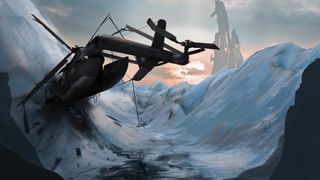
Laidlaw is also the source of the most detailed, and contentious, piece of evidence relating to Episode 3's composition. In 2017, having departed Valve the year before, Laidlaw uploaded a short story to his website. Titled Epistle 3, it features gender-swapped characters with similar names to the Half-Life 2 cast (such as Gertie Fremont and Alex Vaunt).
The ensuing story proceeds thus: Gertie and Alex crash-land their aircraft, venturing through a blizzard to the location of the Hyperborea, where they find it guarded by an ad-hoc fortress constructed by an alien force named the Disparate, who are researching the ship as it is "oscillating in and out of our reality". Before they can infiltrate the vessel, Gertie and Alex are detained by "minions of our former nemesis" Dr Wanda Bree, whose "back-up personality" has been imprinted "into a biological bank resembling an enormous slug" who pleads with Gertie and Alex to end her life. Alex believes the Bree-Slug deserves her fate, but Gertie claims she "might have done something to hasten the slug's demise."
Not far from Bree's hiding place, Gertie and Alex discover Dr Jerry Maas, who provided the location of the Hyberborea, "held in a Disparate interrogation cell". They release Jerry and board the ship, which begins to oscillate between its current present and a previous point in time, specifically just before the Disparate launched its Nine Hour Armageddon invasion.
Jerry and Alex argue over what to do next. Alex wants to destroy the Hyberborea, while Jerry wants to save it for study. The argument turns into a fight, resulting in Alex shooting Dr Maas dead. Just before they destroy the Hyperborea "that sneering trickster" Mrs X appears. Mrs X absconds with Alex, leaving Gertie to her fate. But as the Hyberborea teleports into a Disparate Dyson sphere, Gertie is rescued by the Ghastlyhaunts who "parted their own checkered curtains of reality". Gertie concludes the letter with, "Expect no further correspondence from me regarding these matters; this is my final epistle."
The parallels between Epistle 3 and the world of Half-Life are obvious. Nonetheless, the authenticity of Epistle 3 as a plot summary of Episode 3 is debatable. "My reaction to Epistle Three was largely, 'Oh, I've seen these kinds of things from Marc before,'" Robin Walker told Kotaku in March 2021. "There was never a document from Marc about, 'Here's the overall exact thing that needs to happen [in Episode 3].' Instead, there were many documents." Speaking to Rock, Paper, Shotgun this year, Laidlaw expressed regret for publishing Epistle 3, saying that he was "deranged" at the time, stating it "created the impression that if there had been an Episode 3, it would have been anything like my outline, whereas in fact all the real story development can only happen in the crucible of developing the game".
If Episode 4 happened
We don't go to Ravenholm
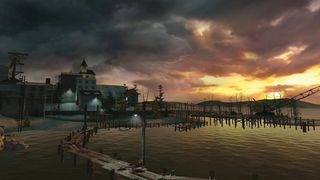
Speaking to Eurogamer in 2006, Gabe Newell shared some thoughts about Valve's approach to expanding the Half-Life universe. Referring to Gearbox's work making expansions for Half-Life, he said, "I like the idea of expansion packs giving you a different perspective on things you've already lived through," When asked if he'd like to revisit the HL2 timeline again he added, "We might do with expansion products because there's a lot of fun stuff there to explore."
Newell was not speculating. At this point, work had already begun on a fourth Half-Life episode. It wasn't made by Valve, but by Junction Point Studios, a new developer founded from the ashes of Ion Storm Austin by Deus Ex director Warren Spector.
I spoke to Spector about the episode in 2017, and he revealed several key details. The episode was to be set in Ravenholm, and would have detailed the story of its fall. "We wanted to tell the story of how Ravenholm became what it was in the Half-Life universe," Spector recalled. "In addition to fleshing out the story of Ravenholm, we wanted to see more of Father Grigori and see how he came to be the character he later became in Half-Life 2."
The episode would have also introduced a new weapon, the Magnet Gun, which would shoot out magnetic balls that would draw any nearby metal objects to their location. "You could fire it at a wall across an alley from a heavy metal dumpster and wham! The dumpster would fly across the alley and slam into the wall. You can imagine the effect on anything approaching you in the alley—either squashed or blocked."
Junction Point worked on the episode for "a solid year" somewhere between the end of 2005 and mid-2007. During this time, the studio produced a "vertical slice" showing off the magnet gun, and a "small area that demonstrated how the game would look when we were done". According to Spector, the project was ultimately cancelled by Valve, which was "frustrating" for Junction Point. "We had just started building what I thought was amazing stuff. And that's when Valve pulled the plug."
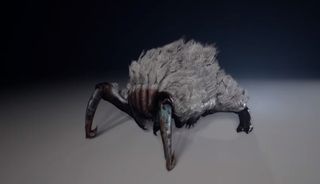
It isn't clear why the episode was dropped, but it's possible Valve was unsatisfied with what Junction Point was producing. Shortly after the cancellation, Valve hired Arkane Studios to build a very similar expansion, known simply as Ravenholm, and even sent over Junction Point's Magnet Gun prototype as a starting point.
Arkane's project progressed considerably farther than Junction Point's, to the point where there is a playable alpha version kept within the studio. Designed as a standalone episode, it would have heralded the return of Adrian Shepherd, the protagonist of Half-Life: Opposing Force. Shepherd would team up with Father Grigori, who had created a serum to make him immune to headcrab bites, as the pair explored a "kind of experimentation centre" that was formerly a children's hospital. Ravenholm would feature Junction Point's Magnet Gun, alongside a nail gun used to create ad-hoc electrical circuits for solving puzzles. Grigori's experiments would have seen him mutate as the game progressed, gradually turning into a monster.
Like Junction Point's project, Ravenholm was cancelled, allegedly because Valve deemed it too expensive. In an email to the website Lambda Generation, Marc Laidlaw explained: "We felt like a lot of the staples of Ravenholm—headcrabs and zombies!—were pretty much played out." Laidlaw added, "the fact it would have to take place sometime before the end of Episode 2" was a "creative constraint that would hamper the project".
Episode 3 isn't happening but Half-Life 3 might happen
Our benefactors
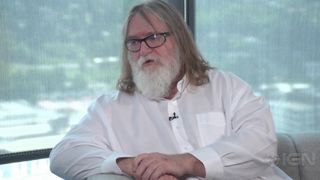
As the promise of Episode 3 dwindled, the gaming community tried to fathom why Valve would leave the Half-Life story unfinished.
As the promise of Episode 3 dwindled, the gaming community tried to fathom why Valve would leave the Half-Life story unfinished. The logical conclusion was Valve must be developing something bigger. It isn't clear when the narrative shifted from focusing on Episode 3 to Half-Life 3, but the idea was certainly in transition by the time two Canadian fans picketed Valve headquarters in August 2011, sitting on lawn chairs with cardboard signs that read, "CANADA 4 THE RELEASE OF HALF LIFE 3," and, "HALF LIFE 3 IS IT LEFT 4 DEAD?" Gabe Newell greeted the picketers, and they were even given a tour of Valve's offices. Later, Newell spoke to Kotaku about the incident, saying, "They wanted to know when Episode 3 was coming out."
This wasn't the only time fans demanded more information from Valve regarding Half-Life. In 2011, a Steam group called A Call for Communication (Half-Life) evolved from a forum petition first started in 2009, attracting 50,000 members as of February that year (the group remains active, celebrating its tenth birthday in 2021). In January 2012, a group of Steam users launched Operation Crowbar, purchasing crowbars on Amazon and mailing them to Valve as a form of protest.
These may appear like petty, entitled stunts, but at the same time Valve seemed unable to help teasing its community with hints and allusions to a new Half-Life game. In April, Newell was jokingly asked on a podcast "When can we expect the release of Ricochet 2?" to which he responded "We'd like to be super-transparent about the release of Ricochet 2. The problem is, we think that the twists and turns that we're going through would probably drive people more crazy than just being silent about it." Two months later, Newell appeared in a video forging a crowbar. Asked, "Hey, is that about ready?" He responded, "These things, they take time." Then, in August, Newell appears in another video in which he jokes, "You'll never get Half-Life 3 if you eat me."
Among these vague hints of Half-Life 3 were outright fabrications. In 2012, an April Fools prankster posted an image on Steam of a faked Half-Life 3 logo with the words "Now Available" underneath, fooling several legitimate news publications. Speculation about Half-Life 3 ramped up significantly in 2013, when Valve apparently filed a trademark request in the EU for the name Half-Life 3. Fanning the flames was a leak from Valve's bug-tracking database Jira that revealed the names of two development groups, one titled Half-Life 3, and another listed as Half-Life 3 core. But the trademark was fake, while the validity of the Jira leak is impossible to confirm.
Half-Life VR
Revelations
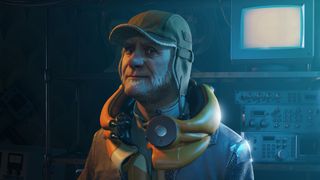
As the 2010s progressed, the hints and rumours became more accurate. In 2015, Valve programmer Jeep Barnett revealed the company was experimenting with Half-Life assets in virtual reality, but stopped short of confirming Valve was making a Half-Life VR game. "Would we like to make all our franchises in VR? Absolutely, but we don't have enough time or people. So we have to figure out what's the best fit, what plays to the strengths of VR." Later that year, Valve released a VR app, which included a data string for something called HLVR.
Valve was making a new Half-Life game, and it was coming out soon. But it wasn’t Half-Life 3.
Then, In November 2019, came the news that everybody, yet also nobody, was waiting for. Valve was making a new Half-Life game, and it was coming out soon. But it wasn't Half-Life 3. Instead, it was Half-Life: Alyx, a VR-exclusive prequel to Half-Life 2 which put players in the shoes of a young Alyx Vance years before she meets Gordon Freeman. For those who could afford to play it, Alyx would prove worth the wait, offering all the imagination, excitement, and innovation expected from a Half-Life game. But its reveal, PR campaign, and post-mortems also provided fresh insight into what happened with Half-Life 3.
It turned out that Half-Life 3 had existed, albeit briefly. Between 2013 and 2014, Valve had worked on a project referred to as Half-Life 3 that blended procedurally generated encounters with more authored levels, thus creating a more replayable experience. The project lead, David Spreyer, recalled how the procedural systems would work in Geoff Keighley's interactive article Half-Life Alyx: The Final Hours. "The game would find a building, seal up all the windows so there was only one way in, put a citizen or prisoner somewhere in the building, and then populate the building with enemies." However, Spreyer says the prototype "didn't get very far" because Valve's new engine, Source 2, was ill-suited to building a shooter at the time. "There was no lighting solution, no save and restore, no visibility solution. A huge amount of tech was needed."
Half-Life 3 wasn't the only Half-Life project in development during this period. Intended to form part of its 2016 VR game The Lab, Valve created a prototype for a Half-Life themed FPS experience called Shooter. Described by Valve's Jim Murray as "a Half-Life ride in a theme park", Shooter had potential, but Valve ran out of time to make it ready for launch.
Valve had also prototyped at least one, and possibly two other VR games in this period. First, there was Alyx & Dog, a purported VR title that saw players exploring the Half-Life world as Alyx with Dog as their companion. Little is known about the game, but there is concept art from Valve showing Alyx and Dog traversing a range of environments. Around 2015, Valve began concepting Borealis, a VR game themed around Valve's elusive ghost ship led by Marc Laidlaw. "It was too early to be building anything in VR," Laidlaw said to Rock, Paper, Shotgun. "It all evaporated pretty quickly." The existence of this project also lends credence to Robin Walker's claim that Epistle 3 does not necessarily represent the canonical ending of the Half-Life story.
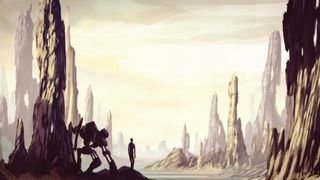
Alyx's release seemed to fill in the gaps left by Valve over the last decade. But there may still be more we don't know about Half-Life 3. In February this year, Half-Life YouTuber Tyler McVicker uploaded a video to YouTube in which he discusses "a conversation" he had with a "former Valve employee", about a prototype of Half-Life 3 that sounds very different from what David Spreyer revealed around the launch of Alyx.
According to McVicker, this iteration of Half-Life 3 would commence with Gordon Freeman awakening in Aperture Science, 20 years after the events of Half-Life 2. Freeman would then travel to a city in the "destroyed ruins of America", joining a ragtag group of rebels who see him as a "curse instead of a messiah". Equipped with a new "robot arm" that "effectively turned him into the Last Airbender", Gordon would proceed to a facility run by Cremators and convince them to help him overthrow the leadership of this American city. McVicker claims this prototype would have been in development around 2013-2014, and was cancelled by 2015 due to "internal conflict" within Valve over whether the next Half-Life should be flat screen or VR.
It's hard to know how seriously to take this. McVicker himself says his words should be "viewed as speculation" until Valve confirms otherwise. Yet it's worth examining in light of what Valve has already confirmed about Half-Life 3. Although McVicker's outline sounds very different from David Spreyer's prototype, nothing McVicker says makes the two incompatible. Indeed, Spreyer never discusses the story or worldbuilding for his prototype, only the procedural mechanics. Moreover, the development window is roughly the same. Hence, it's possible McVicker's outline represents the broader narrative concept for Spreyer's mechanical prototype.
Half-Life 3 didn't happen
Point extraction
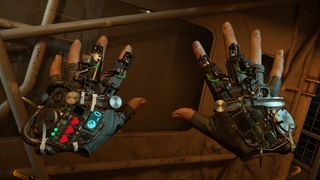
In summary, the challenging development of Half-Life 2 left Valve averse to the idea of building a conventional third Half-Life game, so the company opted to release Half-Life 3 in bitesize episodes, making the project more manageable and taking advantage of Steam. Yet by 2007, the episodic model was outdated, and Valve couldn't find a way to make Episode 3 an artistic solution to a technical problem as Episode 1 and the Orange Box had been. Eventually, Episode 3 was cancelled, and through internet speculation and Valve's cryptic allusions, the narrative becomes that the next Half-Life game will be Half-Life 3.
After completing Portal 2, Valve felt ready to tackle ground-up game development again, and as it began building Source 2, it also experimented with either one or several Half-Life 3 prototypes, one of which definitely featured procedural generation, while another may have involved Freeman liberating an American city with a physics-enhanced robot arm.
Then, in July 2012, John Carmack appears at E3 with the early prototype for Oculus Rift, and Valve sees in VR a revolutionary technology that can be used to make a landmark Half-Life title. By 2015, Half-Life 3 is dead, and Valve begins development of Half-Life: Alyx the following year, releasing the game to acclaim in March 2020.
After all this, 16 years and a whole new game, Valve left fans in almost exactly the position they had been in before, dangling over the edge of a narrative cliff with no resolution in sight. But one thing has changed. We now know Valve's interest in making Half-Life games remains, and may in fact have grown during development of Alyx. Compare Robin Walker's words on the launch of Half-Life: Alyx to how Valve talked about finishing Half-Life 2. "We really enjoyed making this game," Walker told Kotaku in March 2020. "I think we'd really like to keep making some games like this again."
Most Popular


